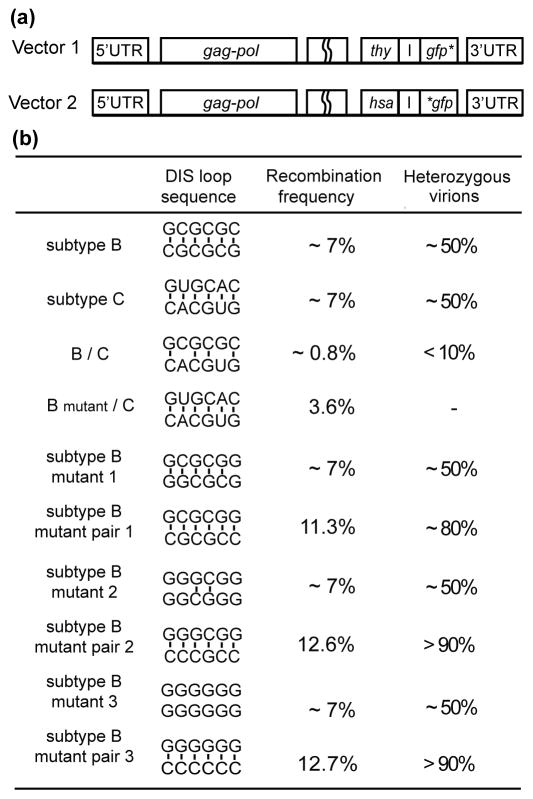Figure 2.
Results of recombination experiments used to assess RNA dimerization and heterozygote formation. (a) 293T cells were co-infected by two parental vectors containing 5′-UTR and gag-pol, followed by either thy or hsa reporter gene. Each vector was designed with a non-native gfp gene containing mutations either on the 5′- or the 3′-end. Therefore, only recombination between these two RNAs would generate functional gfp gene during reverse transcription in an infection event by these newly produced proviruses. (b) The recombination rate of HIV-1 subtype B sequences was approximately 7%, which was close to that of subtype C viruses. However, when cells were co-infected with both subtype B and C vectors, the inter-subtype recombination rate was only 0.8%. This may be explained by the fact that less heterozygous virus were formed. The inter-subtype recombination rate increased approximately 4-fold when the DIS of subtype B was substituted by subtype C DIS sequence176. Similar results were obtained in subtype B DIS mutants. When cells were co-infected with two plasmids containing the same non-self-complementary DIS sequence (mutant 1, mutant 2, or mutant 3), the recombination rates remained at the wild type level. Nonetheless, when cells were dual infected with DIS mutant pairs (mutant pair 1, mutant pair 2, or mutant pair 3), the recombination rates were significantly higher. It is conceivable that in these mutant pairs, formation of heterozygous virions is preferred, thus resulting in enhanced recombination frequencies177.

